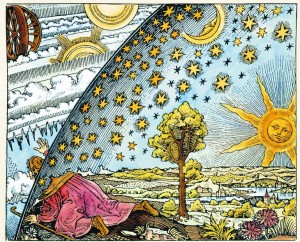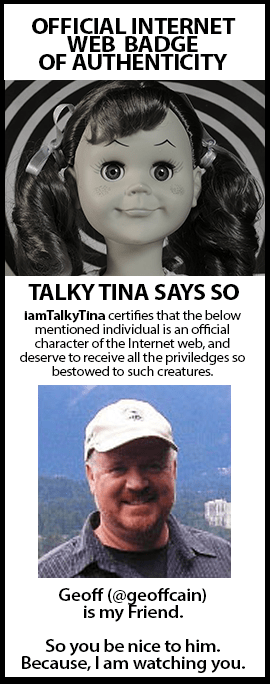After my experiences co-teaching a Health Information Management class at Tacoma Community College a few years ago, I have been particularly interested in Connectivism. Connectivism is a new learning theory developed by George Siemens and Stephen Downes. I have some teaching experience in the k-12 system and there was a lot of emphasis on Constructivism and the work of Vygotsky. The same was true for a Masters program I completed at CSU, East Bay in education. There comes a point though where Constructivism is no longer able to account for how learning occurs in networks. Or how to account for the rapid changes in society, technology, and the rapid increase of information and connections.
An Informal Connectivism Bibliography
This is not meant to be the end-all bibliography, just some texts that have inspired our thinking about Connectivism and teaching and learning. Some of these pieces may seem only remotely connected to the theory. On closer look at some of these resources will reveal the practical applications of the theory. Our original bib contained Plato’s Meno and other works but those may have just contributed to our foundational thinking in education as Vygotsky did.
Albion, P and Maddux, C. (2007) Networked Knowledge: Challenges for Teacher Education. Journal of technology and Teacher Education, Education Research Complete; 15(3):303-310. Retrieved Sept 26, 2011 from: http://eprints.usq.edu.au/4003/2/Albion_Maddux_Author’s_version.pdf
Bessenyei, István. (2008) “Learning and Teaching in the Information Society: eLearning 2.0 and Connectivism.” Retrieved Sept 26, 2011 from: http://www.ris.uvt.ro/wp-content/uploads/2009/01/ibesseneyi.pdf
Blowers, Helene. (2006) “The 23 Things.” Learning 2.0. Public Library of Charlotte & Mecklenberg County blog. Retrieved Sept 26, 2011 from:http://plcmcl2-things.blogspot.com/
Our course content for Health Information Management was directly inspired by this blog posting and its many imitators and reiterations.
Brafman, Ori and Beckstrom, Rod A. (2007) The Starfish and the Spider. Retrieved Sept 26, 2011 from: http://www.starfishandspider.com/
This is a popular business book, but it inspired ideas about how we can make a self-directed curriculum. Curriculum that is group-oriented (and leaderless) rather that forcing people to go off by themselves or being micromanaged by a teacher or alpha student).
Brown, John Seely, (2002). “Growing Up Digital: How the Web Changes Work, Education, and the Ways People Learn.” United States Distance Learning Association. Retrieved on Sept 27, 2011, from http://www.usdla.org/html/journal/FEB02_Issue/article01.html
Brown, John Seely and Adler, Richard P. (2008) “Minds on Fire: Open Education, the Long Tail, and Learning 2.0.” Retrieved Sept 26, 2011 from: http://www.johnseelybrown.com/mindsonfire.pdf
Codognet, Philippe. (1999) “The Semiotics of the Web.” Université Paris 6. Paris, France. Retrieved Sept 26, 2011 from: http://pauillac.inria.fr/~codognet/web.html
Conole, Gráinne. (2008) “New Schemas for Mapping Pedagogies and Technologies.” Retrieved Sept 26, 2011 from: http://www.ariadne.ac.uk/issue56/conole/
Conole, Gráinne. (2008) “Cloudworks: Social networking for learning design.” Retrieved Sept 26, 2011 from: http://www.ascilite.org.au/conferences/melbourne08/procs/conole.pdf
Cormier, Dave. (2008). “Rhizomatic Education: Community as Curriculum” Retrieved Sept 26, 2011 from: http://www.innovateonline.info/index.php?view=article&id=550
Downes, Stephen (2007) “What Connectivism Is.” Retrieved Sept 26, 2011 from: http://halfanhour.blogspot.com/2007/02/what-connectivism-is.html
— (2006) “Learning Networks and Connective Knowledge.” Retrieved Sept 26, 2011 from: http://it.coe.uga.edu/itforum/paper92/paper92.html
Godwin, Peter. (2006). “Information literacy in the age of amateurs: How Google and Web 2.0 affect librarians’ support of Information Literacy.” ITALICS, 5(4). eLIT 2006 Special Issue. Retrieved Sept 26, 2011 from: http://www.ics.heacademy.ac.uk/italics/vol5iss4/godwin.pdf
Granovetter, M. (1973): “The strength of weak ties.” American Journal of Sociology, 78, 1360-1380. Retrieved Sept 26, 2011 from: http://sociology.stanford.edu/people/mgranovetter/documents/granstrengthweakties.pdf
Heylighen, Francis. (2001) “Complexity and Information Overload in Society: why increasing efficiency leads to decreasing control.” Retrieved Sept 26, 2011 from: http://pespmc1.vub.ac.be/papers/Info-overload.pdf
— (2007): “The Global Superorganism: an evolutionary-cybernetic model of the emerging network society.” Social Evolution & History. 6 No. 1,p. 58-119. Retrieved Sept 26, 2011 from: http://pespmc1.vub.ac.be/papers/Superorganism.pdf
Heylighen, Francis, et al. (2001) “The Emergence of Distributed Cognition: a conceptual framework.” Proceedings of Collective Intentionality IV, Siena, Italy. Retrieved Sept 26, 2011 from: http://pcp.vub.ac.be/papers/Distr.CognitionFramework.pdf
Jenkins, H., Clinton, K., et al. (2006). “Confronting the Challenges of Participatory Culture: Media Education For the 21st Century.” Chicago: The MacArthur Foundation. Retrieved Sept 26, 2011 from: http://www.newmedialiteracies.org/files/working/NMLWhitePaper.pdf
Kop, Rita & Hill, Adrian (2008) “Connectivism: Learning theory of the future or vestige of the past?” Retrieved Sept 26, 2011 from: http://www.irrodl.org/index.php/irrodl/article/viewArticle/523/1103
Lévy P. (1997) Collective Intelligence: Mankind’s Emerging World in Cyberspace. Plenum, NY.
Stephen Johnson, (2001) Emergence: The Connected Lives of Ants, Brains, Cities, and Software, Scribner, NY.
–(1997) Interface Culture: How New Technology Transforms The Way We Create & Communicate. Perseus Books.
Laat, Marten de. (2005) Networked Learning. Phd dissertation. Utrecht. Retrieved Sept 27, 2011 from: http://www.e-learning.nl/files/dissertatie%20maarten.pdf
Maness, Jack M. (2006). “Library 2.0 Theory: Web 2.0 and Its Implications for Libraries.” Webology, Volume 3, Number 2 (June, 2006). Retrieved Sept 26, 2011 from: http://www.webology.ir/2006/v3n2/a25.html
McCarthy, Helen et al. (2004) Network Logic: Who governs in an interconnected world? Demos. London, UK. Retrieved Sept 26, 2011 from: http://www.demos.co.uk/files/networklogic.pdf
McLuhan, M. (1964). Understanding media; the extensions of man. New York, McGraw-Hill.
I include McLuhan for a number of reasons here. The main ideas being that learning theories need to have some idea about change management and our relationship to information.
McLuhan, M. (1962). The Gutenberg Galaxy. New York, McGraw-Hill.
Merleau-Ponty, Maurice. (2002). Phenomenology of Perception. (Reprint of the 1962 edition). New York, London: Routledge Classics
Palloff, Rena M., and Keith Pratt.(2005) Collaborating Online: Learning Together in Community. San Francisco, CA: Jossey-Bass.
—. (2007) Building Online Learning Communities: Effective Strategies for the Virtual Classroom. San Francisco, CA: Jossey-Bass.
Phelps, Renata. (2003) Developing Online From Simplicity toward Complexity: Going with the Flow of Non-Linear Learning. Retrieved Sept 26, 2011 from: http://www.unb.ca/naweb/proceedings/2003/PaperPhelps.html
Romeis, Karyn. (2009) Kayrn Romeis Major Project. Retrieved Sept 26, 2011 from: http://karynromeisdissertation.wetpaint.com/
Siemens, George. (2004) “Connectivism: A Learning Theory for the Digital Age” elearnspace blog. Retrieved Sept 26, 2011 from: http://www.elearnspace.org/Articles/connectivism.htm
–(2008). What is the unique idea in Connectivism? Retrieved Oct 3, 2011 from: http://www.connectivism.ca/?p=116
–(2007). Situating Connectivism. Transcript of presentation. Learning Technologies Center wiki. Retrieved Oct 3, 2011 from: http://ltc.umanitoba.ca/wiki/Situating_Connectivism and more discussion about these ideas here: http://ltc.umanitoba.ca/wiki/
This transcript is of particular interest to instructional designers because he talks about specific teaching techniques and activities around Connectivism. We instructional designers are always asking “Great theory – how do we do it?”
— (2006) Knowing Knowledge. elearnspace blog. Retrieved Sept 26, 2011 from: http://www.elearnspace.org/KnowingKnowledge_LowRes.pdf
— (2006). “Connectivism: Learning theory or pastime for the self-amused?” elearnspace blog. Retrieved Sept 27, 2011 from: /http://www.elearnspace.org/Articles/connectivism_self-amused.htm
— (2005) “Connectivism: Learning as network creation.” elearnspace blog. Retrieved Sept 27, 2011 from: http://www.elearnspace.org/Articles/networks.htm
— (2003) Learning Ecology, Communities, and Networks: Extending the classroom. elearnspace blog. Retrieved Sept 27, 2011 from: http://www.elearnspace.org/Articles/learning_communities.htm
Siemens, George and Tittenberger, Peter. (2009) Handbook of Emerging Technologies for Learning. Retrieved Nov 8, 2012 from: http://elearnspace.org/Articles/HETL.pdf
Verhagen, B. v. (2006). Connectivism: a new learning theory? Enschede, Netherlands: University of Twente.Retrieved Sept 27, 2011 from: http://www.surfspace.nl/nl/Redactieomgeving/Publicaties/Documents/Connectivism%20a%20new%20theory.pdf
Vygotsky, L. S. (1978). Mind in Society: Development of Higher Psychological Processes (14th ed.). Harvard University Press.
Wesch, Mike. (2007) “A Vision of Students Today” (video) YouTube. Retrieved Sept 27, 2011 from: http://www.youtube.com/watch?v=dGCJ46vyR9o
We were interested in this because we found it to be an exhilarating call to action. Many instructors found it depressing. We thought that was really funny. Why is this here? Because a learning theory has to account for a student’s experience of knowledge and information management. This is outside the Venn diagram of Constructivism and Connectivism.
Wiley, D. A. and Edwards, E. K. (2002) Online self-organizing social systems: The decentralized future of online learning. Retrieved Sept 27, 2011 from: http://wiley.ed.usu.edu/docs/ososs.pdf




